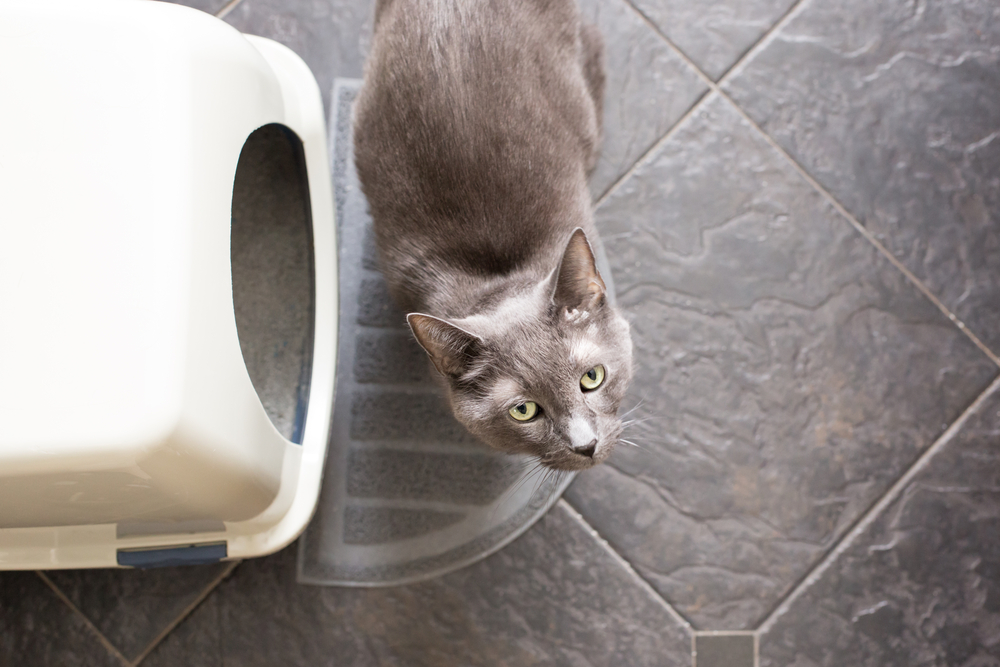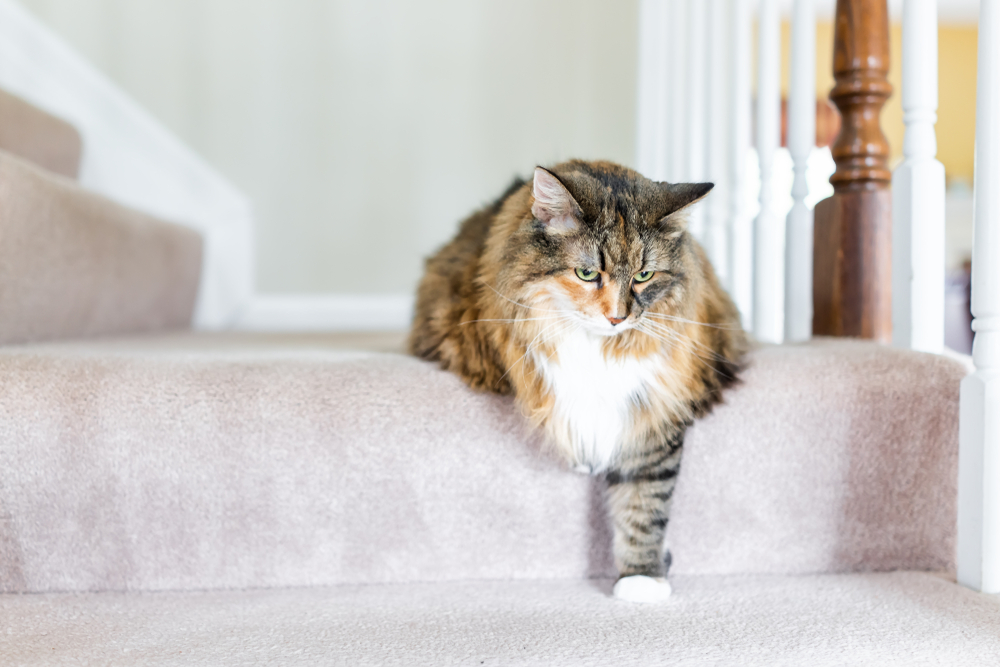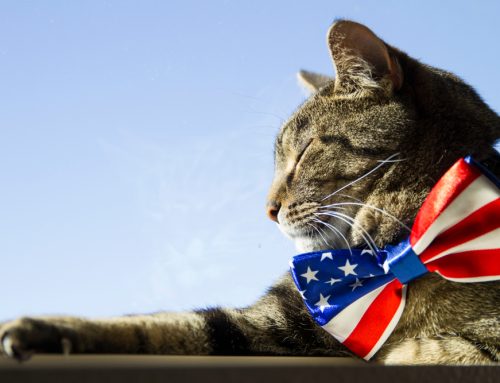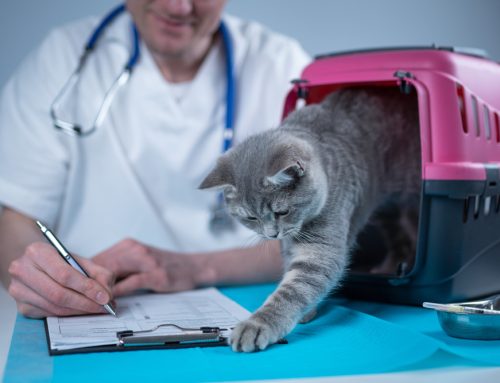Much like your cat’s vital signs, their behavior can be an outward expression of an internal problem. Changes in their personality or routine can provide valuable clues about their physical and emotional health. And, because cats are notorious for masking illness and discomfort, behavior change is often the only way to identify chronic (i.e., ongoing and persistent) conditions such as feline arthritis.
Could your cat be one of the more than 40% of adult felines affected by arthritis pain and inflammation? Veterinary Behavior Solutions has compiled the most common physical signs to help you determine if you need to seek veterinary care.
Your cat is less affectionate or avoiding physical contact
Arthritis pain is not simply a matter of discomfort or stiffness. The disease triggers harmful effects in and around each affected joint, causing reduced flexibility, abnormal blood supply, decreased muscle mass (i.e., atrophy), and a progressive destruction of joint architecture, including the bone, tissue, and nutrient-dense fluid.
This ongoing pain limits your cat’s mobility and increases their stress, placing them in a constant state of arousal and hypersensitivity. In this heightened state, the slightest or softest touch can trigger more pain and irritation. In an attempt to avoid pain through self-isolation, these cats appear aloof, elusive or moody. Affected cats may shy away from petting, and once-social cats may prefer to hide or hang out at the edge of the room.
Your cat’s movement patterns have changed
Like humans, cats adapt their behavior to avoid unnecessary pain, which may include shortening their stride or staying in your home’s central area. One particularly notable instance for cats—one easy for cat owners to identify—is how they travel through vertical space.
Increased spine or limb stiffness can make joint extension painful, if not impossible. Instead of leaping in a single bound, arthritic cats are often forced to divide large movements—such as a jump up or down from height—into several smaller motions. Cats may also rest during the transition and lie down at the midway point or on a long flight of stairs.
Your cat’s litter box habits have declined

House soiling is the number one behavior complaint among cat owners. The myriad causes include box cleanliness, inter-cat aggression, stress, and numerous health conditions. Arthritic cat challenges are more logistical in nature, and tend to revolve around box location and accessibility.
Traditional litter boxes have high sides and entry doors, which can create physical barriers for arthritic cats. Frequent painful experiences can cause litter box aversion and prompt cats to seek out a low-profile alternative, such as a pile of soft clothes or the carpet. Location and availability can also be challenges—if litter boxes are stationed in remote areas or can only be reached by stairs, your cat may choose more easily accessible locations.
Your cat is irritable or unpredictable
Pain has a powerful influence on mood and behavior, and because arthritis is an inflammatory process that can wax and wane according to circumstances (e.g., temperature is known to influence arthritis pain), your cat’s personality changes may appear volatile and unpredictable.
Arthritic cats may react defensively in response to potential pain-inducing actions, such as physical contact, handling, lifting, grooming, and restraint. Cats may also lash out at other house pets in an act of displaced aggression. Although aggressive displays can prompt an emotional reaction, owners should remember that their pet is reacting out of fear or pain, not out of vengeance or maliciousness.
Your cat is grooming less frequently
Felines are known for their fastidious nature, so when your cat starts to neglect their once dedicated self-care regimen, pain and illness are likely to blame.
Grooming requires flexibility—especially through the spine, hips, and shoulders. Arthritic cats with limited range of motion may be unable to reach many areas without pain or stiffness, which can lead to a patchy or unkempt appearance. Without assistance through brushing or combing, cats will experience further discomfort from matting, and may also suffer from dry skin or secondary bacterial infections.
Your cat is less active
Arthritis is prevalent among senior cats, but is not merely an “old age” disease. Arthritis can develop in younger cats after injury or trauma, so all cat owners should stay alert for arthritis-related behavior changes, such as increased sleeping and reluctance to exercise or play. Once playful cats may self-limit their interactions with toys, play less vigorously with other cats, or struggle to pursue a moving target such as a motorized mouse or ball.
Cat owners should be careful not to dismiss these signs as an indication that their cat is simply “getting old” or maturing as an adult. If your cat is uncharacteristically subdued or disinterested in their once-beloved activities, consult your regular veterinarian.
From me-OW to Me-WOW—relief for arthritic cats
Although arthritis is incurable and progressive, with proper veterinary management—including pain medication, weight loss, low-impact exercise, and environmental modification (e.g., ramps, low-sided litter boxes)—arthritic cats can enjoy a near normal quality of life.
The next time you wonder about your cat’s unusual behavior, ask yourself whether their actions might reveal their emotional or physical health condition. And, when you’re ready for answers, contact Veterinary Behavior Solutions. Connect with us to schedule your pet’s behavior consultation.







Leave A Comment